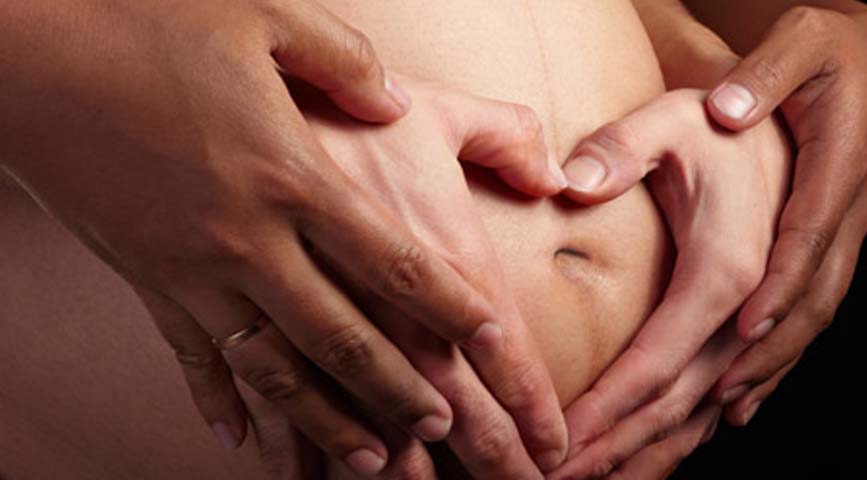
Common Skin Changes During Pregnancy
During pregnancy, women undergo many changes, from their body shape and appetite to their mood and skin.
Find out what the most common skin changes in pregnant women are and how you can deal with the less flattering ones.
The pregnancy glow
The glow that others notice when you’re pregnant is not an old wife’s tale. This facial shine is caused by the increased volume of blood to the cheeks, giving it an attractive, natural blush.
On top of the redness, the increased secretions of the oil glands also give the skin a waxy sheen. This flushed face is similar to what non-pregnant women experience when they cry or are excited.
The pregnancy mask
During the second trimester, pregnant women may get a shock when they gaze at themselves in the mirror.
Brownish or yellowish patches called chloasma, also known as the pregnancy mask, can appear anywhere on the face, but are most commonly seen on the forehead, upper cheeks, nose and chin.
Your skin may acquire a blotchy tan as the pregnancy hormones oestrogen and progesterone stimulate the melanin cells in the skin to produce more pigment, but not uniformly. Women with darker skin may also notice darkened circles around their eyes.
Chloasma cannot be prevented, but you can minimise the intensity of the blotchy, darkened areas by limiting your exposure to sunlight.
Acne
You probably thought your pimple days were over, but not quite! While acne during pregnancy is rarely as severe as that of adolescence, you may need some of your teenage cleansing rituals.
Fortunately, the bumps and pimples you experience during pregnancy will subside shortly after delivery.
Remember to avoid abrasive scrubs or exfoliants as a woman’s skin during pregnancy is too sensitive for these. Instead, turn to milder, oatmeal-based facial scrubs to unplug the oily pores.
Linea nigra
Many women normally have a faint lineaalba (white line) running from their navel to the centre of their pubic bone, which is barely visible before pregnancy.
Sometime in the second trimester, a lineaalba becomes a lineanigra, a dark line that is much more noticeable. In some women, the line extends upward from the navel as well.
The lineanigra is darker in darker-skinned women and disappears several months after delivery.
Dark areas will become darker
Little moles and freckles that existed prior to pregnancy may now become bigger, and brown spots or birthmarks become browner. New moles may also appear.
The areola and nipples of your breasts will also become a lot darker. Unlike other areas of your skin, which return to their original colour after pregnancy, your areola will probably always be somewhat darker than they were before you were pregnant.
Red palms and soles
Even as early as the second month of pregnancy, the insides of your hands and the bottoms of your feet may itch and take on a reddish hue called palmar erythema.
Spider veins
Tiny, red or purple capillaries just below the surface of the skin will branch out and become more visible during pregnancy – these are known as spider veins.
It is also common for spider veins to pop out on the face or on the sclera (i.e. the white part of the eyeballs) during delivery, where intense, red-in-the-face pushing can break tiny blood vessels.
Known as nevi, these burst vessels can be camouflaged by the appropriate use of makeup. Nevi takes longer to disappear than many of the other skin problems of pregnancy – some spider veins on the legs or torso may not go away on their own.
A dermatologist can remove these burst vessels using injections if you feel that’s necessary.
Skin tags
Some pregnant women may develop tiny polyps (i.e. abnormal growth of tissue projecting from a mucous membrane) called skin tags. These polyps are present in areas where the skin rubs other parts of the body or clothing.
Commonly found under the arms, between neck folds, or under bra lines on the chest, skin tags are caused by the hyperactive growth of a superficial layer of skin.
They generally disappear a few months following delivery, but can be easily removed surgically if they bother you.
Heat rash
You may think that only babies get prickly heat rash, but pregnant women do too!
Caused by an already overheated pregnant body, dampness from excessive perspiration, and the friction of skin rubbing against itself or clothing, prickly heat rash is pimply and slightly irritating.
It is most commonly found in the crease between and beneath the breasts and where the bulge of the lower abdomen rubs against the top of the pubic area. It is also found on the inner thighs.
Itching
Many pregnant women enjoy a good “scratch down” at the end of the day.
Some areas of your skin may itch because they are dry and flaky, others may itch because of a prickly rash, as mentioned above. The itching is found to be most bothersome in the skin that stretches, mainly over the abdomen, but also on hips and thighs.
Pimply eruptions
About 1% of pregnant women experience itchy, red, raised patches on their abdomen, thighs, buttocks, and extremities. This condition is called pruritic urticarial papules and plaques of pregnancy (PUPP).
PUPP tends to come and go during the second half of pregnancy and nearly always disappears shortly after delivery. The treatment for this is the same as for any other itchy skin eruption.





